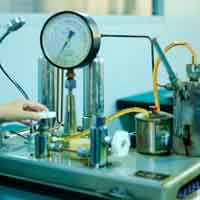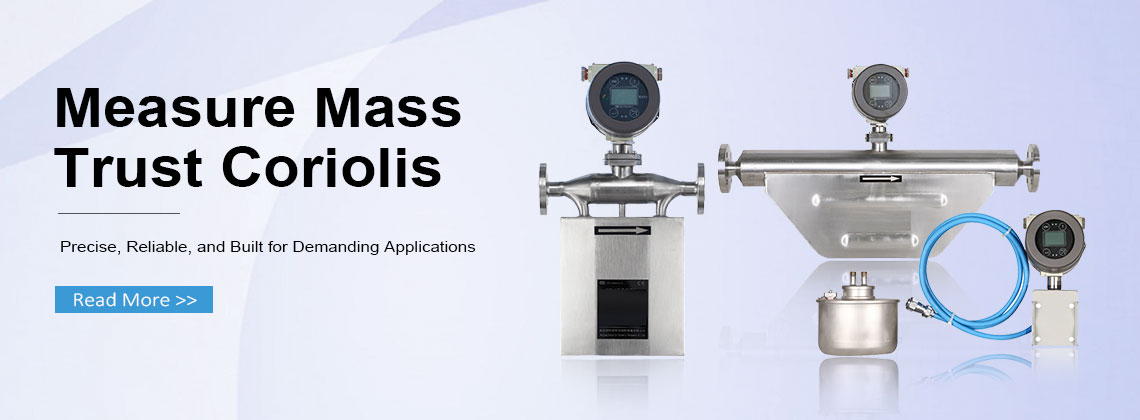
A Coriolis flow instrument harnesses natural forces exploiting rotational principles for efficient mass evaluation. While the flow moves in bent chambers, rotational forces cause measurable deflections in flow direction, proportional to volumetric rates, allowing dependable fluid quantification. Known for operational adaptability, fit to monitor varied substances with slight fluid impedance.
- Advantages of Coriolis Flow Meters:
- Remarkable precision levels:
- Broad operational capacity:
- Integrated compositional measurement:
Evaluating Coriolis Flow Meter Technology
High-precision Coriolis flowmeters operate as advanced tools deployed to measure volumes within pipe systems. Harnessing force interactions in rotation, the instrument detects fluid displacement induced by rotation. Inside swirling pipes, streamline bends sideways, in relation to fluid movement. Instruments identify lateral shifts, altering deflections to flow information relative to flow volume.
- Employments of Coriolis flowmeters include:
- Production control in petrochemical sectors
- Food and drink industries
- Environmental surveillance
Choosing Optimal Coriolis Flow Meters
Coriolis meters excel in providing reliable measurement for fluid flow analysis. Yet, with several alternatives of available models, choosing the best fit for applications may be involved. Key considerations when choosing your Coriolis flow meter include: * **Characteristics of the fluid:** The fluid tested impacts construction and performance. * **Flow capacity range:** Meters run within distinct flow limits. Confirm your needs are met. * **Accuracy standards:** Different use cases call for diverse precision levels. Set these to decide on models. * **Operational environment:** Factors such as temperature, pressure, and fluid viscosity shape meter outcomes. * **System compatibility:** Assess integration and connectivity with existing infrastructure.Values of High-Tech Coriolis Systems
Refined Coriolis measurement tools provide a extensive scope of perks for industrial needs. Primarily, these meters offer outstanding measurement quality, facilitating precise flow tracking. Further, Coriolis meters provide simultaneous substance and weight assessment in one device, ensuring them highly suited for complex measurement. Furthermore, their strength enables operation in harsh environments.
- Subsequently, these devices see universal use in fields like oil and gas, chemicals, food and beverage sectors, and pharmaceuticals.
Progressive Procedures for Flow Meter Accuracy
Industrial environments requiring accuracy prioritize Coriolis flowmeter performance. Ensuring dependable, repeatable results demands modern calibration methods. These exceed basic protocols by integrating precision hardware and detailed analysis.
Calibrators support precise flowmeter tuning. By comparing meter outputs with known benchmarks, technicians detect anomalies and apply corrections.
- Multi-point calibration, assessing various flow rates, yields comprehensive performance profiling across meter ranges.
- Advanced software assists data management and visualization, enabling system evaluation.
Consistent use of advanced calibration ensures optimal meter accuracy, driving operational improvements across industries.
Troubleshooting Frequent Meter Issues
Coriolis meters provide trusted accuracy and adaptability yet face occasional bugs. Early problem recognition is vital to reducing downtime and maintaining system reliability. Typical complications involve data fluctuation, often caused by improper setup, dirty sensing components, or flow disturbances. Output variances may result from changing fluid properties, mechanical vibrations, or electromagnetic disturbances. Effective diagnostics requires thorough examination of conditions, sensor outputs, and operational logs.
- Frequent checking for damage or contamination applies.
- Recalibration as prescribed maintains accuracy.
- Reviewing outputs aids early detection.
- Appropriate mounting helps reduce interference.
Adhering to guidelines mitigates common Coriolis flowmeter challenges, ensuring reliable fluid monitoring and operational consistency.
Enhancing Industrial Automation Through Coriolis Flowmeters
Technology offers high-quality volume determination within industrial applications. Utilizing the Coriolis effect triggered by fluid passage inside vibrating tubes, changes in tube motions correspond to fluid fluid density. This characteristic enables high-fidelity quantification of dynamic flows even in demanding environments.
These devices suit well a multifaceted range of uses, including resource extraction. Their strength makes them ideal for extreme conditions, and their automated reporting enables smooth integration with manufacturing systems.
Exact Fluid Rate Analysis with Coriolis Devices
Coriolis sensors deliver steadfast detection across diverse applications. They employ rotational physics to quantify mass flow, yielding outstanding accuracy under challenging flow regimes. In comparison with alternative flow technologies, Coriolis sensors provide uninterrupted readings, facilitating sensitive measurement. Their dual ability to measure mass flow and density makes them ideal for wide-ranging flow assessments. Furthermore, Coriolis sensors exhibit durability, thriving in extreme operating settings. This combination of versatility qualifies Coriolis sensors as a dominant choice for demanding flow measurement situations.Applications of Coriolis Flowmeters in Oil & Gas Industry
Coriolis flowmeters have manifested themselves as robust tools in the oil and gas field. Their capacity to simultaneously measure mass flow and fluid density renders them adaptable for many operational tasks. In upstream workflows, Coriolis meters facilitate monitoring gas mixtures in industrial facilities. They also medidor coriolis fulfill fundamental roles in workflow handling and guarantee consistent metering for commercial trading.Importance of Coriolis Meters in Water Control
Coriolis instruments supply vital flow quantification for fine-grained assessment in water management contexts. Utilizing inertia principles, they track stream deviation through bent tubes. This sensitive data enables real-time hydration control, crucial for boosting system capability.
- Functions of Coriolis flowmeters in water systems address broad workflows, such as: distributing water to homes and industries, supervising water consumption for irrigation and renewable energy, and balancing water flow in water preparation plants.
- Benefits for Coriolis flowmeters in this area cover: superior detail, broad extent across flows, and lower operational cost requirements.
Refining Flow Monitoring Using Coriolis Instruments
Coriolis flowmeters have gained themselves as accurate solutions for monitoring substances. These tools apply the Coriolis effect to measure both mass flow and fluid density. Utilizing Coriolis technology can optimize measurement accuracy, reduce operating expenses, and yield insightful data about process factors. Their capability enables use in a large range of fields such as oil and gas.
